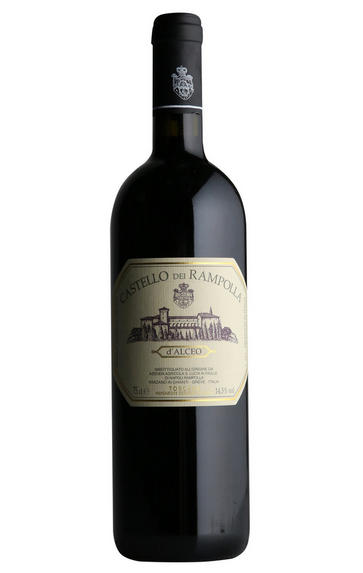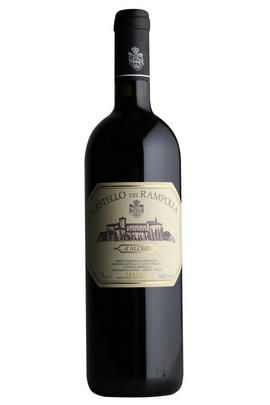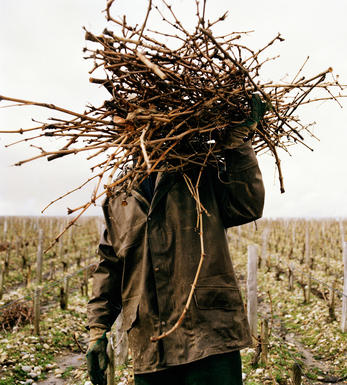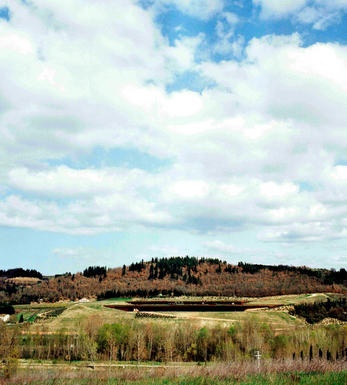
2008 d'Alceo, Castello dei Rampolla, Tuscany, Italy

Critics reviews
Antonio Galloni - 30/06/2012
About this WINE

Castello dei Rampolla
Castello dei Rampolla’s pedigree and roots are firmly entrenched in the Super Tuscan category. The estate dates back to the 13th century and has remained in the hands of the Di Napoli family since 1739.
Inspired by the success of Sassicaia, Alceo Di Napoli made the decision to plant Cabernet Sauvignon and Sangiovese vines in 1965. In these early years, grapes were sold onto Piero Antinori, as he gathered the fruit for the first vintages of Tignanello. The first Castello dei Rampolla vintage was launched in 1980 to great success. In part, this was thanks to the watchful eye of Giacomo Tachis, an oenologist who had previously consulted on Sassicaia during its ascent to fame.
Production is tiny, spanning anywhere from 8,000 to 25,000 bottles a year dependent on the vintage. But, among those lucky enough to taste them, the Castello dei Rampolla wines have garnered an impressive reputation for their bold, nuanced style and propensity to age gracefully.
Winemaking at Castello dei Rampolla is minimalist, and current owner Luca Di Napoli made the move to biodynamic practices in 1994, three years after taking over from his father. Luca is also implementing a gentler oak regime, and has credited his wines’ jump in quality to this.

Chianti Classico
Chianti Classico is a leading Tuscan DOCG zone which covers approximately 7,000 hectares between Florence and Siena. Its vineyards stretch into the Apennine foothills at altitudes of between 150m and 500m, and encompass two distinct terroirs and styles. The sandy, alluvial soils of the lower sites yield fuller, meatier wines while the limestone and galestro rocks of the higher vineyards deliver finer, more ethereal examples.
The origins of Chianti date back to the Middle Ages, although Chianti Classico was really born in 1716 when Grand Duke Cosimo III of Tuscany classified the zone, identifying the villages of Radda, Greve, Panzano, Gaiole and Castellina as the leading sites; these same villages still represent the nucleus of the Chianti Classico DOCG today. The regulations have been revised, however, to insist that the wine is made from a minimum 80 percent Sangiovese and a maximum 20 percent Canaiolo and ameliorative grapes (ie Merlot and Cabernet Sauvignon); from the 2006 vintage, no white grapes are allowed.
Chianti Classico cannot be released until 1st October in the year following the harvest, while Chianti Classico Riserva must undergo 24 months of ageing before release, including at least three months in bottle. At the region’s top addresses, French barriques are gradually being adopted in the place of the traditional, larger slavonian botte.
Recommended Producers: Monte Bernardi, Tenuta Fontodi, Castelo di Ama, Bibbiano

Sangiovese
A black grape widely grown in Central Italy and the main component of Chianti and Vino Nobile di Montepulciano as well as being the sole permitted grape for the famed Brunello di Montalcino.
It is a high yielding, late ripening grape that performs best on well-drained calcareous soils on south-facing hillsides. For years it was blighted by poor clonal selection and massive overcropping - however since the 1980s the quality of Sangiovese-based wines has rocketed upwards and they are now some of the most sought after in the world.
It produces wines with pronounced tannins and acidity, though not always with great depth of colour, and its character can vary from farmyard/leather nuances through to essence of red cherries and plums. In the 1960s the advent of Super Tuscans saw bottlings of 100% Sangiovese wines, as well as the introduction of Sangiovese/Cabernet Sauvignon blends, the most famous being Tignanello.


Buying options
Add to wishlist
Description
The 2008 dAlceo is a huge, inward, brooding wine. Plums, black cherries, camphor, incense and smoke emerge over time, but only with great reluctance. The 2008 is going to require considerable patience, but it is shaping up to be an absolute jewel. The dAlceo is a wine of notable depth and purity, but it is very closed down at the moment. Dark red fruit, flowers, mint, spices, tar, cassis, graphite and camphor linger on the huge, structured finish. This is a towering effort from the Di Napoli family. Anticipated maturity: 2018-2033.
Antonio Galloni - 30/06/2012
wine at a glance
Delivery and quality guarantee